Long before the Merkava: the first stages of development of the IDF tank fleet
Currently, the tank units of the Israeli ground forces are equipped only with locally designed and produced Merkava tanks. The first tanks of this series were put into service in the late seventies, and before that time the Israel Defense Forces were forced to use only imported equipment. These were not always modern combat vehicles, and the process of development of armored forces faced certain limitations.
First steps
During the War of Independence, the Israeli armed forces did not have full-fledged armored vehicles, incl. tanks. A temporary solution to this problem was a variety of armored vehicles made on an accessible basis. They made it possible to cover current needs, but for further military construction, full-fledged tanks and equipment of other classes were required.
Even during the War of Independence, Israel began to receive foreign military assistance in the form of outdated armored vehicles. Later, after the end of hostilities, these processes continued. The first tank of the IDF is considered to be the British cruiser Mk VIII Cromwell. In addition, the American M4 Sherman medium tank and its modernized variants played a major role in the development of the IDF tank forces. Equipment of this line came to Israel from the USA, France and other countries. In total, according to various sources, at least several hundred Shermans were shipped.
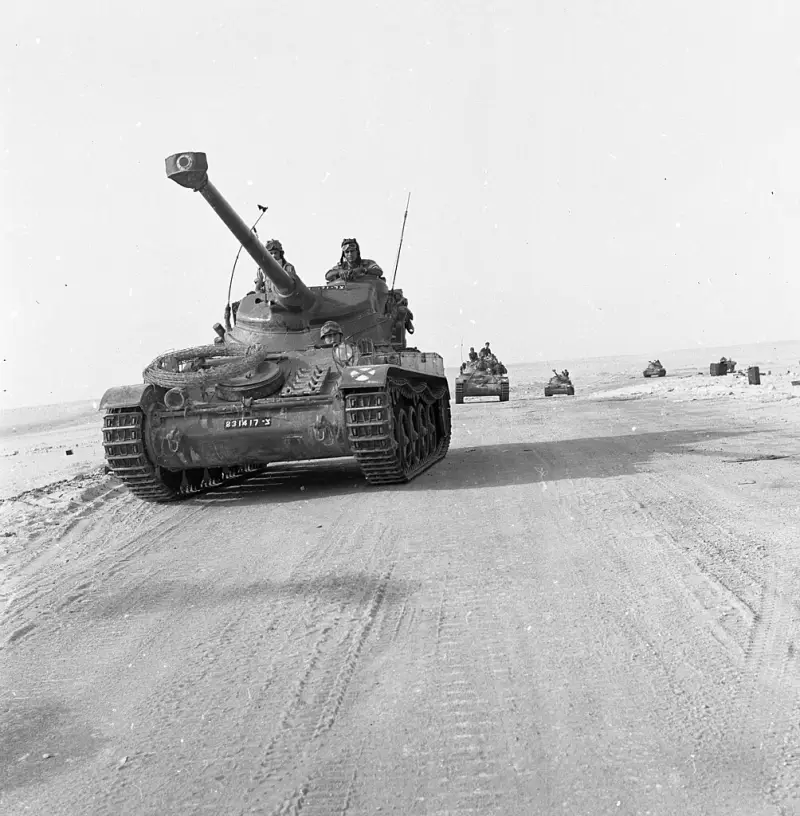
AMX-13 made in France. Photo National Library of Israel
In the first half of the fifties, the French industry began delivering AMX-13 light tanks with a 75 mm gun. In total, 100 of these machines were delivered over several years.
During the same period, Israel and the UK began negotiations for the supply of new Centurion medium/main tanks. The first contract on this topic appeared in 1958, and deliveries began in 1959. Subsequently, several more similar contracts appeared, providing for the supply of new modifications to the Centurions. Over the entire period, the IDF has supplied at least 1000-1100 tanks that were either new or removed from service with the British Army.
A mixed fleet of American, French and British-made tanks first saw action in 1956 during the Suez Crisis. The IDF suffered some losses, but compensated for them. We managed to take 40 Egyptian M4 tanks, suitable for restoration, as trophies. After the necessary repairs, they were accepted into service.
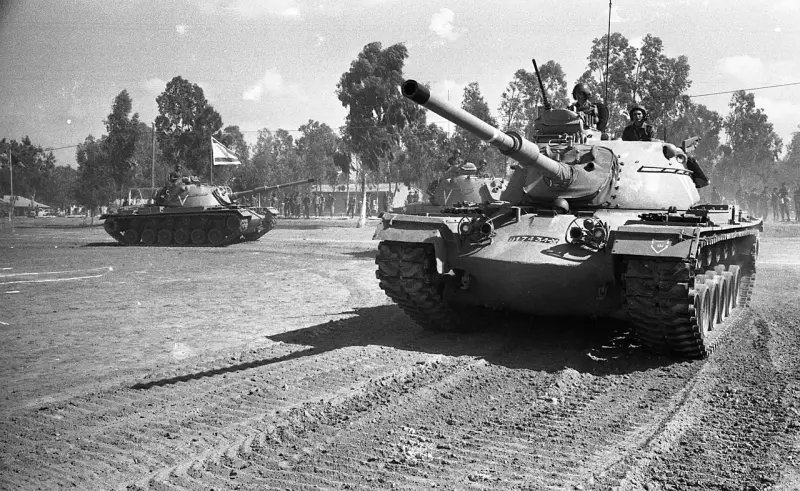
Tanks "Magah-3" - M48 after Israeli modernization. Photo National Library of Israel
Next generation
A new stage in the construction of IDF armored forces began in the mid-sixties. The existing Shermans and AMX-13s, despite all the measures taken, were by this time morally and physically outdated. "Centurions" of various modifications still satisfied the army in a qualitative sense, but their number did not correspond to the existing threats.
The solution to this problem was the American-made M48 Patton medium tanks, which received the Israeli name “Magah-1”. The IDF received hundreds of such vehicles directly from the United States and from some friendly NATO countries. By the mid-sixties, the Pattons had become obsolete, but even in this case they were better than the previously available M4s. In addition, deliveries of British Centurions in current versions continued.
With a mixed fleet of US and UK-made equipment, Israel entered the Six-Day War. In the battles, the IDF suffered significant losses in armored vehicles, approx. 400 units, but at the same time was able to capture rich trophies. She received significant quantities of armored vehicles, incl. tanks suitable for further use.
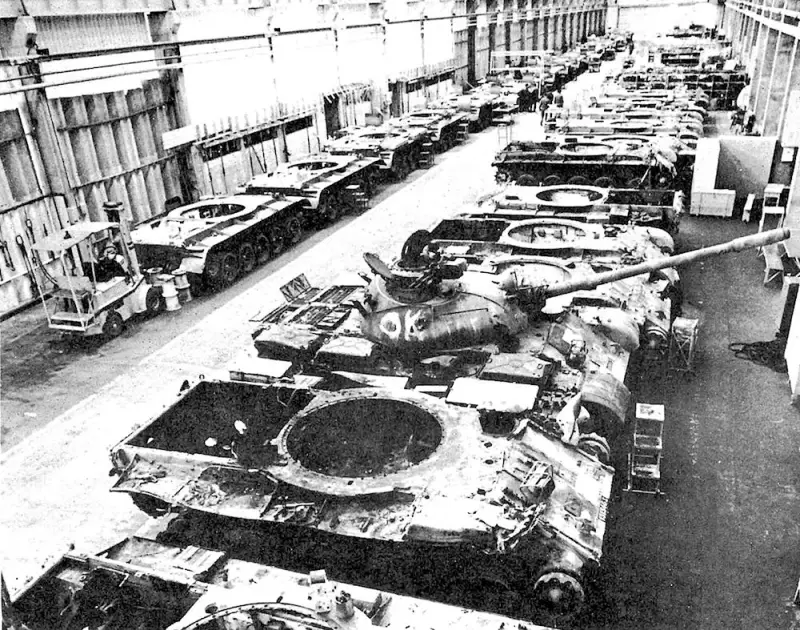
Captured T-54/55 in the process of restructuring. Photo by Israeli Ministry of Defense
According to known data, the IDF recaptured up to 90 M48 tanks and about three dozen Centurions from the Jordanian army, not counting other equipment. In addition, the trophies were approx. 80 T-54 tanks, up to 50 T-55 vehicles and 6 amphibious PT-76 belonging to the Egyptian armed forces. Former Jordanian armored vehicles, after minor repairs, entered service with the Israeli army. We had to work with Soviet-style equipment, but it also ended up in units. Captured T-54/55 were called "Tiran-1/2".
In the early seventies, new deliveries of tanks from the USA began. This time, M60s arrived in Israel, locally renamed Magakh-6. In 1971, the first large batch of 150 tanks was shipped, and later the number of such equipment was increased to 700-800 units.
During the Yom Kippur War in 1973, the IDF again lost over 400 tanks of all models and was again able to compensate for the losses with trophies. After repairs, another 350 Soviet-made Tyrants were supplied to the troops. We also managed to capture approx. 80 newer T-62s, named "Tiran-6". The fleet of floating PT-76s was replenished with 19 new vehicles.
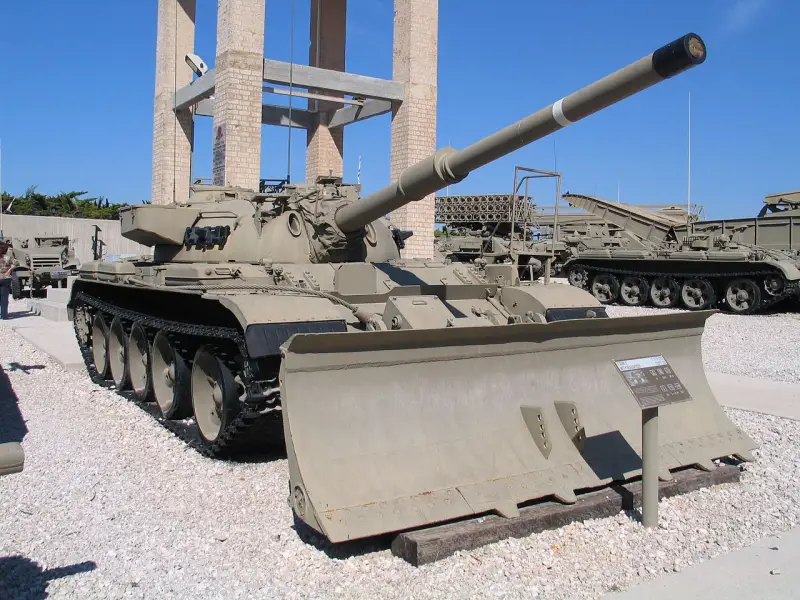
Tank "Tiran-6Sh" - T-55 with a 105 mm gun. Photo: Wikimedia Commons
By the end of the seventies, Israel was able to start production of its first Merkava tank, which reduced the need for foreign equipment. Over the next few years, purchases of tanks abroad continued, but then stopped. Over all this time, according to various sources, up to 750-800 M48 Patton tanks and no more than 1300-1400 M60 vehicles were delivered.
Lean approach
Until the end of the seventies, Israel could not establish its own tank production, and the supply of foreign equipment imposed certain restrictions. In this regard, the IDF tried to carefully handle the tanks, promptly restore them after breakdowns, and also carry out modernizations.
In the mid-fifties, the existing M4 tanks were upgraded to the M50 project, also known by the unofficial designation Supersherman. This tank retained the main components and mechanisms, but received a 75 mm CN-75-50 cannon from the French AMX-13 tank. By the middle of the next decade, this refinement had been completed approx. 300 Shermans. In 1962, serial modernization of tanks began under the M51 project, another modification of the M4, equipped with a new power plant, suspension and a French-made 105 mm gun. Only 180 tanks underwent this modification.
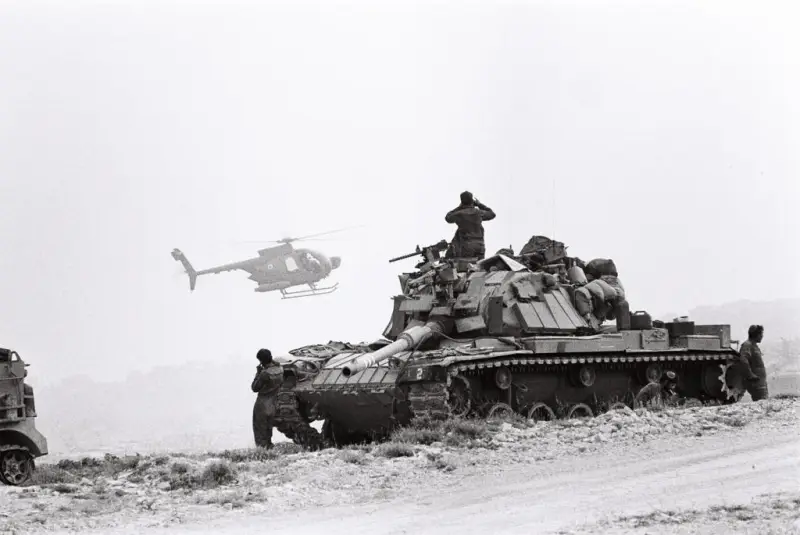
"Magah-6" or M60 dj during the fighting in Lebanon, 1982. Photo of the Israeli Ministry of Defense
Already in the battles of the fifties, AMX-13 tanks did not perform well. It was for this reason that they decided to transfer the French 75 mm gun to the more protected M4. The remaining light tanks were later sold abroad. The same fate befell all the remaining Shermans - but this happened already in the seventies.
American M48s received the local designation "Magah-1" and subsequently underwent three successive upgrades with sequential numbering. As it developed, the Patton tank received a new power plant, enhanced protection, incl. mounted, as well as a 105 mm gun. The last in this series was the Magah-5 tank.
In the late sixties, a project to modernize the Centurion tank called “Shot Kal” appeared. On its basis, three more serial projects and one experimental one were completed. The equipment was updated by replacing some devices. First of all, the fire controls were replaced, while the hull and power plant remained the same. Apparently, over time, all remaining Centurion tanks were rebuilt according to the Shot Kal project - at least 1000-1100 units.
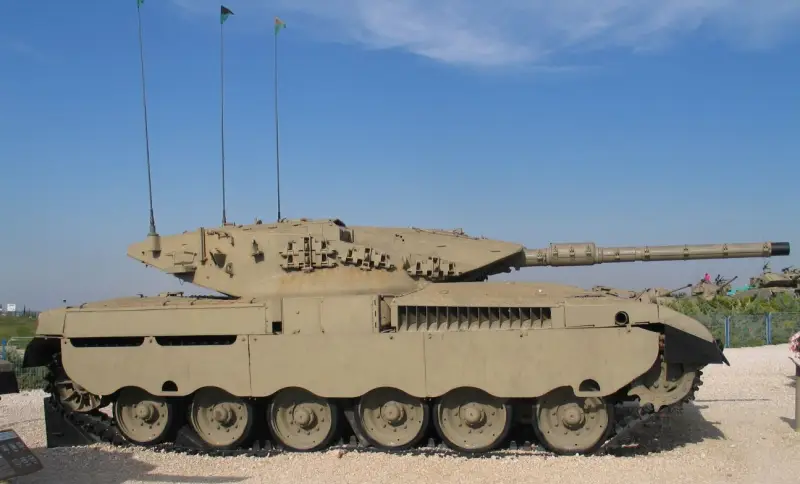
Serial MBT "Merkava Mk 1". Photo: Wikimedia Commons
American-made M60 tanks served under the name "Magah-6/7". Based on the existing design, almost 12 modifications with a different power plant, improved weapons and/or fire control devices were developed. The latest versions of "Magaha" were created already in the nineties.
Captured T-54/55 and T-62 were put into service and operated in their original configuration. At the end of the sixties, an attempt was made to equip the T-54 and T-55 with a new 105-mm gun of the NATO standard, but not all existing tanks received it. Subsequently, due to the obsolescence of the Tyrants and the emergence of new capabilities, it was decided to rebuild Soviet-made tanks into heavy armored personnel carriers Akhzarit.
New era
Thanks to foreign equipment, obtained commercially or otherwise, the IDF was able to equip its armored units and even use them effectively in real conflicts. However, dependence on imports had its own negative characteristics and created undesirable risks.
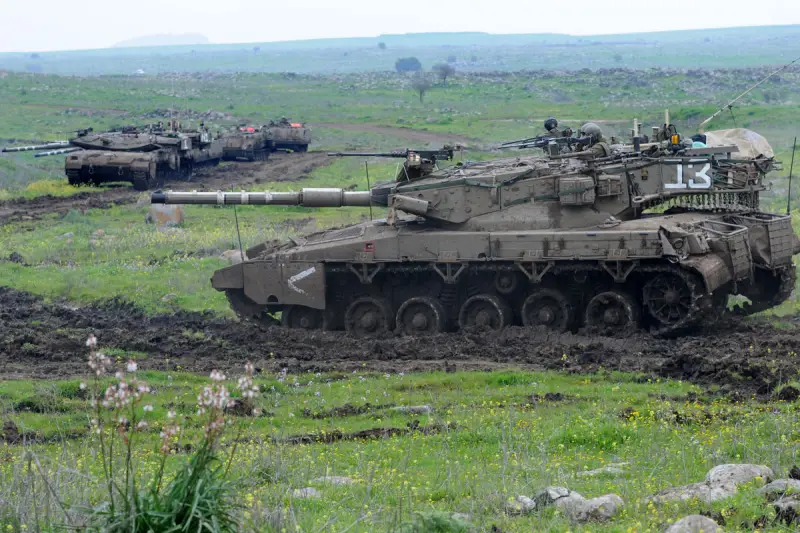
Combatant "Merkava Mk 2". Photo by Israeli Ministry of Defense
Thus, despite all efforts, the tank fleet of the Israeli army remained unified, which made work, maintenance and supply difficult. In addition, the supply of equipment and spare parts depended on the will and desire of third countries. Finally, it was not always possible to acquire modern models with high tactical and technical characteristics.
In the late sixties, Israel and Great Britain negotiated the supply of Chieftain tanks. It was not possible to find a common language, and the further rearmament of the IDF was in question. In this regard, in 1970 it was decided to develop its own tank according to its own tactical and technical requirements. Development processes, production launch, etc. took several years, and in 1979 the IDF received the first production tanks of the new Merkava Mk 1 model.
Having started production of its own tank, Israel gradually abandoned the purchase of foreign equipment. Over time, the army received a large number of Merkava tanks, which supplanted other combat vehicles and became the basis of the armored forces. At the same time, they did not abandon the old machines - they were kept in service, modernized or rebuilt according to new designs.
In recent decades, the IDF has completed the transition to tanks of its own production. "Tyrants", "Shots" or "Magakhs" were completely abandoned as linear equipment for tank units. Further development of armored forces is also planned to be carried out on our own and using equipment of our own design. New tanks to replace the Merkava are already being developed and are expected in the foreseeable future.
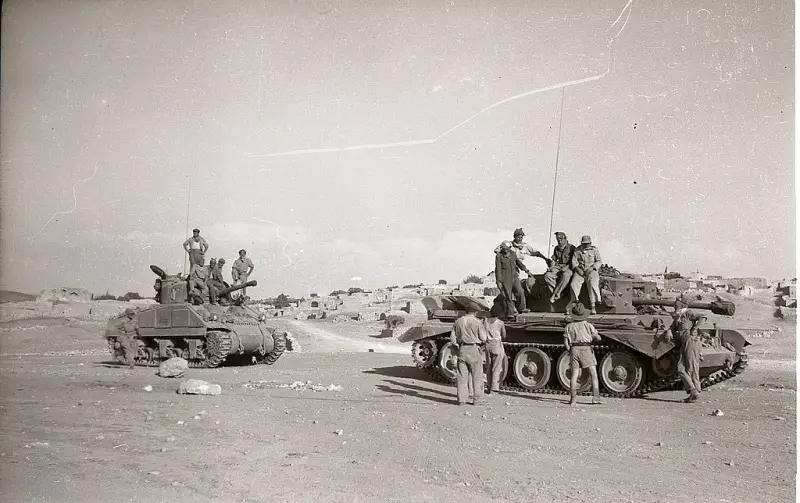
Information